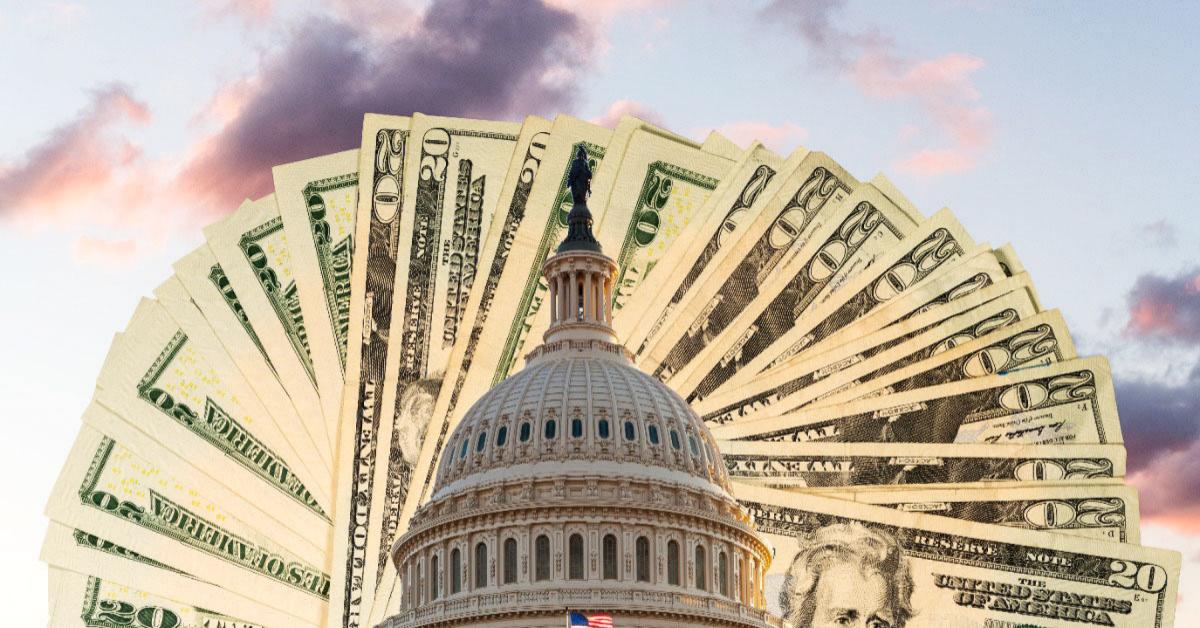
By popular thinking, the key driver of economic growth is the increase in total demand for goods and services. It is also held that overall output increases by a multiple of the increase in expenditure by government, consumers and businesses.
It is not surprising, then, that most commentators believe that through fiscal and monetary stimulus, government can prevent the US economy falling into a recession. For instance, increasing government spending and central bank monetary pumping will strengthen the production of goods and services.
It follows then that by means of increases in government spending and central bank monetary pumping the authorities can grow the economy. This means that demand creates supply. However, is it the case?
Why Does Supply Precede Demand?
In the free market economy, wealth generators do not produce everything for their own consumption. Part of their production is used to exchange for the produce of other producers. Hence, production precedes consumption, with something exchanged for something else. This also means that an increase in the production of goods and services sets in motion an increase in the demand for goods and services.
According to David Ricardo:
No man produces but with a view to consume or sell, and he never sells but with an intention to purchase some other commodity, which may be immediately useful to him, or which may contribute to future production. By producing, then, he necessarily becomes either the consumer of his own goods, or the purchaser and consumer of the goods of some other person.
Note that one’s demand is constrained by one’s ability to produce goods, and the more goods that an individual can produce the more goods he can demand. If a population of five individuals produces ten potatoes and five tomatoes—this is all that they can demand and consume. The only way to raise the ability to consume more is to raise their ability to produce more.
On this James Mill wrote:
When goods are carried to market what is wanted is somebody to buy. But to buy, one must have the wherewithal to pay. It is obviously therefore the collective means of payment which exist in the whole nation constitute the entire market of the nation. But wherein consist the collective means of payment of the whole nation? Do they not consist in its annual produce, in the annual revenue of the general mass of inhabitants? But if a nation’s power of purchasing is exactly measured by its annual produce, as it undoubtedly is; the more you increase the annual produce, the more by that very act you extend the national market, the power of purchasing and the actual purchases of the nation…. Thus it appears that the demand of a nation is always equal to the produce of a nation. This indeed must be so; for what is the demand of a nation? The demand of a nation is exactly its power of purchasing. But what is its power of purchasing? The extent undoubtedly of its annual produce. The extent of its demand therefore and the extent of its supply are always exactly commensurate.
Expanding Pool of Savings Is the Key to Economic Growth
Without the expansion and the enhancement of the production structure, it will be difficult to increase the supply of goods and services in accordance with the increase in the total demand. The expansion and enhancement of the infrastructure hinges on the expanding pool of savings (this pool comprises of final consumer goods). The pool of savings is required in order to support various individuals that are employed in the enhancement and the expansion of the infrastructure.
Consequently, it does not follow that an increase in government outlays and loose monetary policy will lead to an increase in the economy’s output. It is not possible to lift the overall production without the necessary support from the flow of savings.
For instance, a baker produces ten loaves of bread and exchanges them for a pair of shoes with a shoemaker. In this example, the baker funds the purchase of shoes by producing the ten loaves of bread. Note that the bread maintains the shoemakers’ life and well-being. Likewise, the shoemaker has funded the purchase of bread by means of shoes that maintains the bakers’ life and well-being.
Assume the baker has decided to build another oven in order to be able to increase production of bread. To implement his plan, the baker hires the services of the oven maker, paying him with some of the bread he is producing. The building of the oven here is supported by the production of bread. If for whatever reasons the flow of bread production is disrupted, the baker would not be able to pay the oven maker. As a result, the making of the oven would have to be abandoned.
Hence, what matters for economic growth is not just tools, machinery and the pool of labor, but also an adequate flow of consumer goods that maintains individuals’ life and well-being.
Government Does Not Generate Wealth
Government does not produce wealth, so an increase in government outlays cannot revive the economy. Various individuals who are employed by the government expect compensation for their work. One of the ways it can pay these individuals is by taxing others who are generating wealth. By doing this, the government weakens the wealth-generating process and undermines prospects for economic recovery.
According to Murray N. Rothbard:
Since genuine demand only comes from the supply of products, and since the government is not productive, it follows that government spending cannot truly increase demand.
Fiscal and monetary stimulus appear to improve the economy if the flow of savings is large enough to fund government sponsored activities while still permitting a growth rate in the activities of wealth generators. However, if the flow of savings is decreasing, overall real economic activity cannot be revived regardless of any increase in government outlays and monetary pumping by the central bank. In this case, the more government spends and the more the central bank pumps, the more will be taken from wealth generators, thereby weakening any prospects for a recovery.
For example, when loose monetary and fiscal policies diverts bread from the baker, he will have less bread at his disposal. Consequently, the baker will not be able to secure the services of the oven maker. As a result, it will not be possible to boost the production of bread, all other things being equal.
As the pace of loose policies intensifies, a situation could emerge whereby the baker will not have enough bread left to even sustain the workability of the existing oven. (The baker will not have enough bread to pay for the services of a technician to maintain the existing oven in a good shape). Consequently, the production of bread will actually decline.
Similarly, other wealth generators, because of the increase in government outlays and monetary pumping, will have less savings at their disposal. This in turn will hamper the production of their goods and services and will retard and not promote overall real economic growth. As one can see, not only does the increase in loose fiscal and monetary policies not raise overall output, but on the contrary, it leads to a weakening in the process of wealth generation in general.
According to Jean-Baptiste Say:
The only real consumers are those who produce on their part, because they alone can buy the produce of others, [while] … barren consumers can buy nothing except by the means of value created by producers.
Conclusion
In popular thinking, increases in government spending and central bank monetary pumping strengthens the economy’s overall demand. This, in turn, sets in motion increases in the production of goods and services, leading to the belief that “demand creates supply.”
If individuals do not allocate enough savings in order to support increases in the production of goods and services, the economy cannot expand. In order to be able to exchange something for goods and services, individuals must first have something to exchange. This means that in order to demand goods and services individuals must first produce something useful.
Hence, supply drives demand, not the other way around. Increases in government spending result in the diversion of savings from the wealth-generating private sector to the government, thereby undermining the wealth generating process. Likewise, monetary pumping sets in motion the wealth diversion from wealth generators toward the holders of pumped money.





